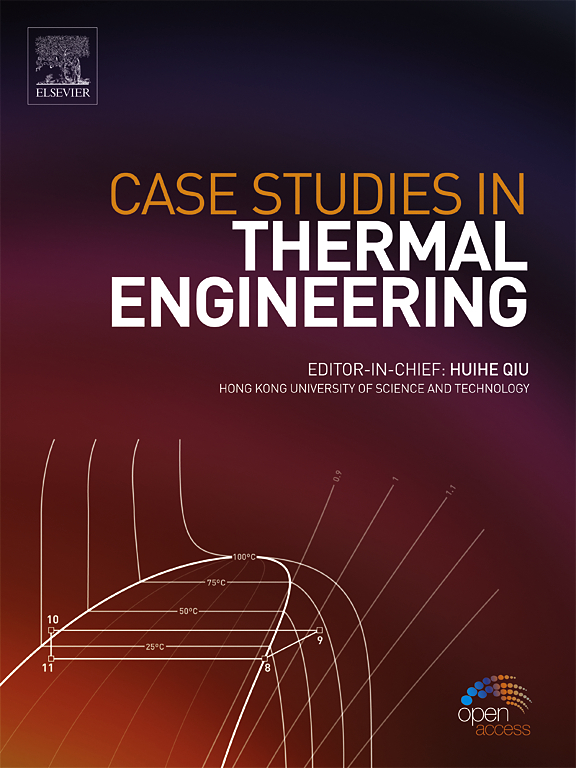焊接热循环对 WAAM-GTAW 生产的奥氏体不锈钢 (ASS) 308L 第一层中的δ-铁素体演化的影响
IF 6.4
2区 工程技术
Q1 THERMODYNAMICS
引用次数: 0
摘要
本文探讨了线弧快速成型气体钨极氩弧焊(WAAM-GTAW)对焊缝几何形状和观察区域热影响区的影响。在 GTAW 工艺的基础上,通过熔敷焊接逐层生产 WAAM 部件。每个焊接过程都记录一个点的温度,以确定温度历史。这篇文章解释了从焊接热输入到后续冷却阶段的特定热循环如何决定了 δ-铁氧体的转变行为、相稳定性和形态变化,并最终塑造了焊接材料的特性和性能。本文解释了影响这些性能的因素,以确定观察区域的演化微观结构。本文重点讨论了温度历史对确定 WAAM 工艺中沉积的观察零件的宏观结构和微观结构 δ-铁素体演变的影响。焊接过程中经历的热循环导致δ-铁素体转变为奥氏体。当温度升至 800 ℃-450 ℃(T 8/5)以上时,δ-铁素体转变为奥氏体。温度高于 T8/5 的试样表现出三角铁素体的蛭石(V)和共晶铁素体(EF)模式。在 T8/5 区域有 750 °C 至 525 °C 左右峰值温度预测记录的试样表现出针状铁素体 (Ac) 模式。在 425 ℃ 左右接近 T8/5 下线的试样显示出从针状到粗大 Ac 的转变。峰值温度记录低于 T8/5 线的试样在焊接过程后一般不会发生变化。本文章由计算机程序翻译,如有差异,请以英文原文为准。
Influence of the welding thermal cycle on δ-ferrite evolution in the first layer of austenitic stainless steel (ASS) 308L produced by WAAM-GTAW
In this article, the effects on the weld bead geometry and heat affected zone at observe area explored on Wire Arc Additive Manufacturing Gas Tungsten Arc Welding (WAAM-GTAW). Based on GTAW process, layer by layer WAAM components are produced by deposition welding. Each welding process, the temperature is recorded at one point to determine temperature history. This article explained how specific thermal cycles, from the welding heat input to subsequent cooling phases, dictate the transformation behavior, phase stability, and morphological changes in δ-ferrite, ultimately shaping the material properties and performance of the welded. The factor affecting these properties were explained to identify evolution microstructure in observe area. The paper focuses on the impact of the temperature history to determine macrostructure and microstructure δ-ferrite evolutions of the observe parts deposited in the WAAM process. The thermal cycle experienced during welding lead to the transformation of δ-ferrite into austenite. The δ-ferrite transforms in austenite when the temperature rises above 800 °C–450 °C (T 8/5). Specimens that experienced temperatures above T8/5 exhibited vermicular (V) and eutectic ferrite (EF) modes of delta ferrite. Specimens that had peak temperature prediction records around 750 °C–525 °C in the T8/5 area exhibited ferrite with acicular (Ac) mode. Specimens approaching the lower line of T8/5 around 425 °C showed a transition from acicular to coarse Ac. Specimens with peak temperature records below the T8/5 line generally did not experience changes after the welding process.
求助全文
通过发布文献求助,成功后即可免费获取论文全文。
去求助
来源期刊

Case Studies in Thermal Engineering
Chemical Engineering-Fluid Flow and Transfer Processes
CiteScore
8.60
自引率
11.80%
发文量
812
审稿时长
76 days
期刊介绍:
Case Studies in Thermal Engineering provides a forum for the rapid publication of short, structured Case Studies in Thermal Engineering and related Short Communications. It provides an essential compendium of case studies for researchers and practitioners in the field of thermal engineering and others who are interested in aspects of thermal engineering cases that could affect other engineering processes. The journal not only publishes new and novel case studies, but also provides a forum for the publication of high quality descriptions of classic thermal engineering problems. The scope of the journal includes case studies of thermal engineering problems in components, devices and systems using existing experimental and numerical techniques in the areas of mechanical, aerospace, chemical, medical, thermal management for electronics, heat exchangers, regeneration, solar thermal energy, thermal storage, building energy conservation, and power generation. Case studies of thermal problems in other areas will also be considered.
 求助内容:
求助内容: 应助结果提醒方式:
应助结果提醒方式:


